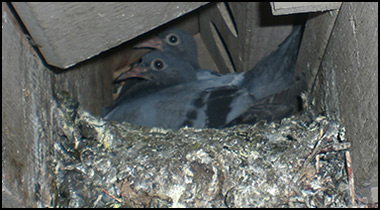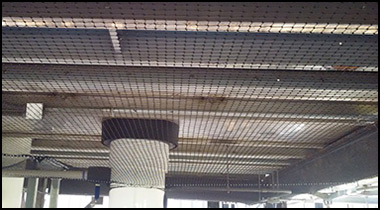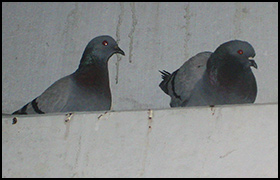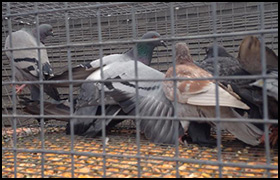Seattle Bird Control
Welcome to Bird Removal of Seattle! We specialize in the humane and effective resolution of human/bird conflicts in the Seattle metro region, and throughout Washington. Whether you have a single bird in a building, or need to prevent pigeon roosting (and bird droppings) on a large architectural project, we can solve your Seattle bird problem effectively and professionally. We install exclusion materials to keep birds away, and even provide pigeon trapping as a means of Seattle bird removal. We are not a pest control company, but rather wildlife, bat, and bird specialists only. Click on our Seattle Prices page to find out more about our prices for bird control work. You can also read the topics addressed on this website to learn more about how to resolve your specific bird conflict. We look forward to hearing from you.

Seattle Bird Removal & Structural Repairs

Exclusion Netting & Spike Installation

Washington Bird Trapping & More
Call 24/7 to discuss your Seattle bird problem.
Same-day or next-day appointments: 206-829-4744
Thorough inspection of your property.
Written estimates for bird project.
Fully Washington licensed and insured.
Structural bird exlusion netting.
Anti-roosting spikes and shock track.
Aurel dispersion and bird harrassment.
Bird dropping cleanup and sanitation services.
Bird damage repair and building exclusion.
Our Service Range - 206-829-4744



For bird control and general wildlife removal, visit the www.SEATTLEPESTANIMAL.COM website.
How do pigeons communicate?
Pigeons have been utilized by humans as means of ‘messengers’ for thousands of years, and continues to do so well into the 21st century. Since over 2000 years ago, the Persians, The Mughals and Romans have all used them as their messengers. As for the Romans, they primarily used pigeon messengers to aid their military. Pigeons are best known for their ability to return to their home based locations from long distances and have therefore been extensively used throughout history as effective messengers. Messages are either carried with small backpacks or attached to the pigeon’s leg. The pigeons and then sent off to their destinations and within a matter of days, the pigeon will seamlessly return to its home. Backpacks are made of soft fabric shoulder straps and either fabric or plastic message holding slots. The fabric is typical light and easy to design, although many materials are susceptible to damage from the natural elements such as rain. The specially designed small holding tubes provide safe places for notes and small supplies.
As for the ways in which pigeons communicate with each other, these are varied. They primarily communicate by sounds, song, and behaviour by movement to talk with each other. Sound plus action is mainly used to shock off predators or warn fellow birds about danger. It is also important for them when attract a mate or trying to defend one's region. As a manner of making friends with other pigeons and during mating time, a male pigeon would coo to females as in order to get the females concentration. The male will strut around, cooing, and fluff his fine hair as if to show off his talents and beauty. Both male and female are apt to flutter their wings and feathers in a playful way. Pigeons also sing to each other in ways that only they can comprehend. When calling their children to fly over to them, pigeons make a very demonstrative "hoohoo" sound as means of communicating.
There are various versions of the infamous “coo” sound, which is made by pigeons to communicate different things to each other. A more descriptive version of the type of coo that they make to pull towards you mates and defend regions, is something similar to coo roo-c' too-coo”. As for the call they create from their nests/homes, it sounds more like [oh/oo/oor]. The official pigeon way of calling for fear is {oorhh}, and infant pigeons make noise by snapping their beaks and hissing. All in all, pigeons are clever birds with rather interesting and ingenious ways of communication. Training pigeons to become messengers is simple yet requires the right amounts of dedication and care. Pigeons are said to navigate in much the same way as humans do, and therefore communication between pigeons and humans is absolutely possible.

